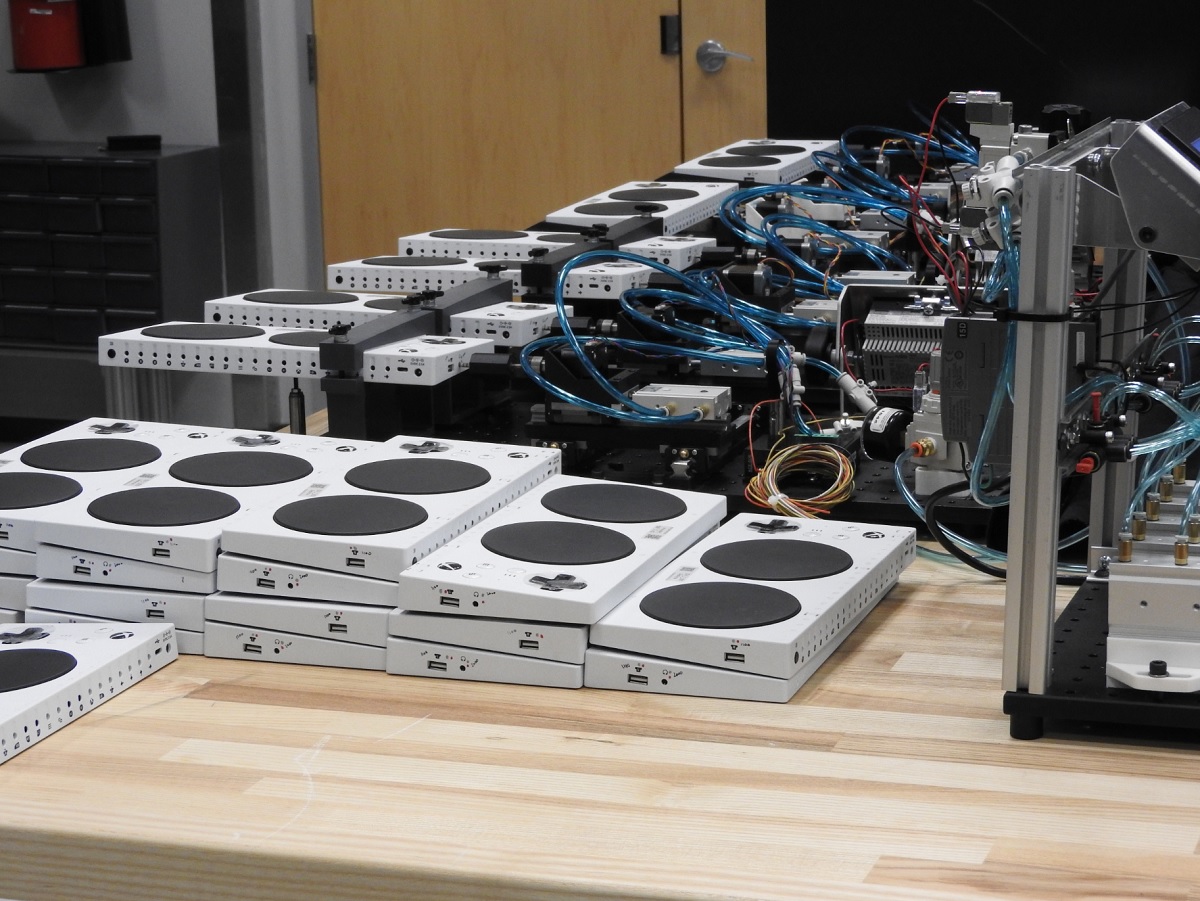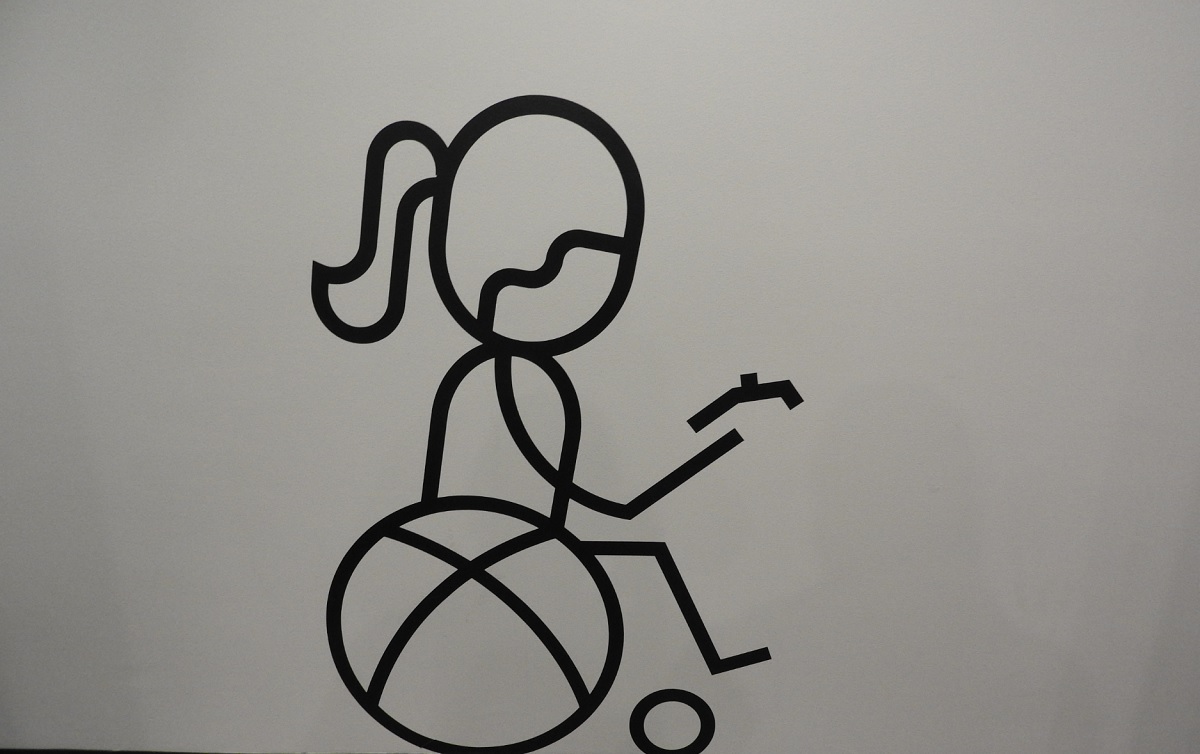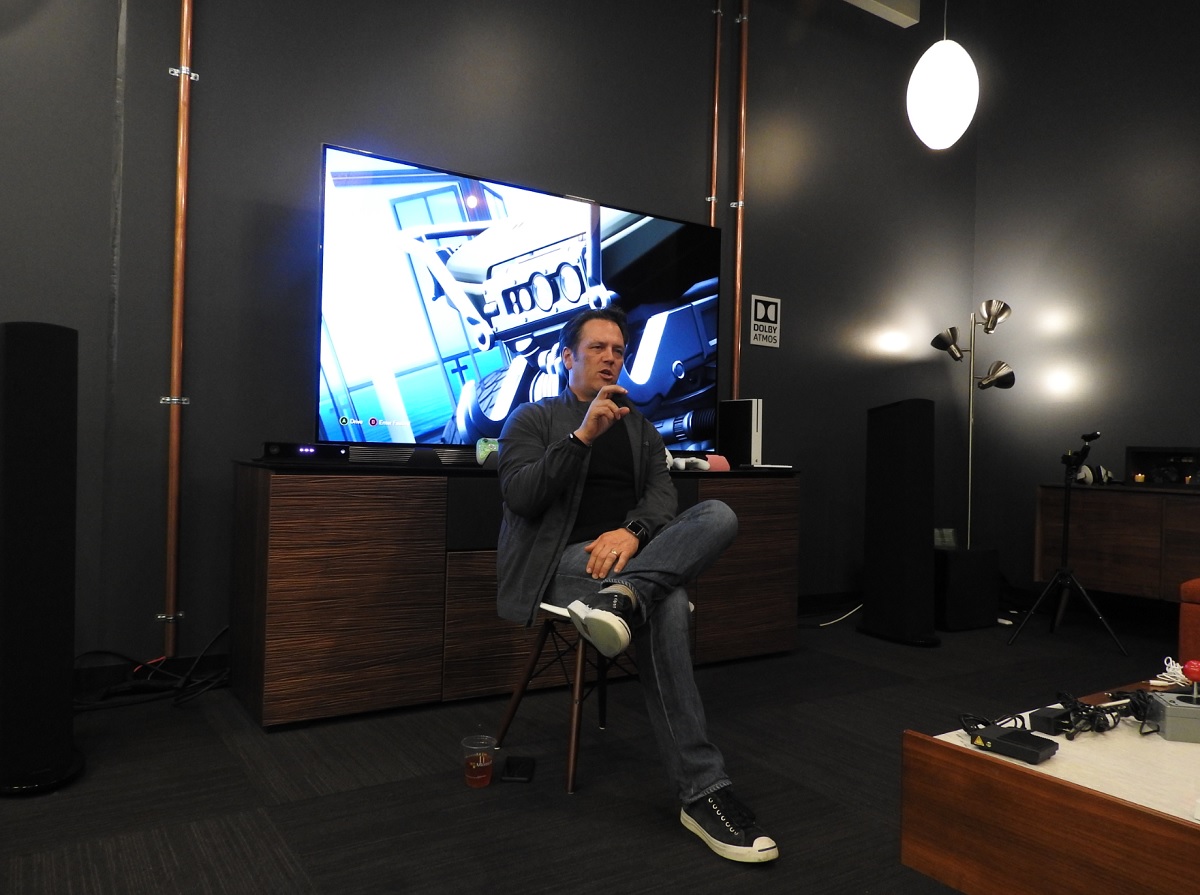Designing a shippable product

Above: Microsoft rigorously tests the Xbox Adaptive Controller.
Even so, it took a while for the project to find its footing.
“This is a project that lived for a while as we were trying to make sure we had the product right. I’d see it at reviews every so often,” Spencer said. “We were excited about the opportunity, but it was always unclear whether we were going to create something that was helpful, or something that was just us trying, but maybe not succeeding. It was great when we started to get some validation from people outside of us here, when we were working with them. That’s really when we greenlit it as more of an official project, something that we really wanted to land.”
In fact, Kris Hunter, director of user research for Microsoft’s WDG division, said there had never been a hackathon product that had turned into a shippable product. Her role was to put the business together. And the design had to be easy enough to set up, since caregivers and occupational therapists aren’t always tech savvy but have to be the primary helpers in configuring the solution for their patients.

Above: Microsoft’s Inclusive Technologies Lab. The wheelchair’s spokes look like an X.
“This requires engineering experience to do this, and not all of the nonprofits have this resource,” Hunter said. “This was expensive to do. If gamers contacted us, we would refer them to a nonprofit, where they got in a queue and had to wait for a rig to be built for them.”
To serve that community, Microsoft decided not to make the Xbox Adaptive Controller into a closed vertical product. Rather, it is an open system, and Microsoft will provide the specification to all third parties that might develop custom hardware accessories to go with it.
Scott Wang, the design researcher for Xbox Devices, collected research on accessibility in games. He believed that software solutions like Copilot could help with accessibility, but ultimately he believed an accessible input device was the best way to help. He went to visit people in homes to do research.
“There is a certain tenacity in the community,” he said. “They are not electrical engineers, but they want to play games. The have to learn technology just to play games again. With daisy-chain solutions, it could be very discouraging. We thought the barriers should be much lower.”
Added Muston-Firsch, “We had a game night for everyone at the hospital. If it took a long time to set up, you saw people lose interest. That was a huge barrier.”
Chris Kujawski, an industrial designer and senior designer, went through numerous designs to make something that could comfortably rest on someone’s lap. They tested everything from the size of buttons to leaving space between the buttons to reduce palm touches.
“We wanted it to be as adaptable and flexible as it could be,” he said.
Overall, the process of designing the product took about 18 months of continuous work. Tiffany Nguyen, a reliability engineer at Microsoft, said they had to test for many different conditions, like what happens if someone spills a can of soda on the controller or runs it over with a wheelchair.
Changing their own lives

Above: A patient at Craig Hospital in Denver, Colorado, tries out the Xbox Adaptive Controller with custom options.
Ultimately, the project moved on and became a reality only because so many people had a passion for it. Spencer said he was touched by people who went through real hoops to play games.
“To see the commitment and passion they have—I’d almost say, at some level, for certain people, whether it’s mobility or function, that gaming can be a real outlet. We’ve seen it in so many cases, like the work where our consoles end up in children’s hospitals. People who play games online as a way of social interaction, when maybe that is their form of social interaction,” Spencer said. “There’s a business opportunity to get more people to play, where these two things can really intersect. The opportunity to open up gaming to a constituency that isn’t able to play as easily as you and I can, and the goodness in bringing more people to the platform—that’s a pretty special moment.”
“Of the 10 years I’ve been at Microsoft, this is the most special product,” said Hunter.

Above: Phil Spencer believes doing good will turn out to be good business when it comes to accessibility.
Galitzky echoed that comment.
“I shipped many products,” he said. “This is the most special product I worked on. The most impactful one. I’m super-proud to be part of the team. Going through this experience just changed our lives. I won’t look at products the same way. We are not stopping here. We will take this to more devices, more products.”
“All of us have been on a world-shifting journey,” Bryce Johnson said.
And Kujawski said, “This is the most important product I’ve designed here. It will impact someone’s life in a positive way.”
